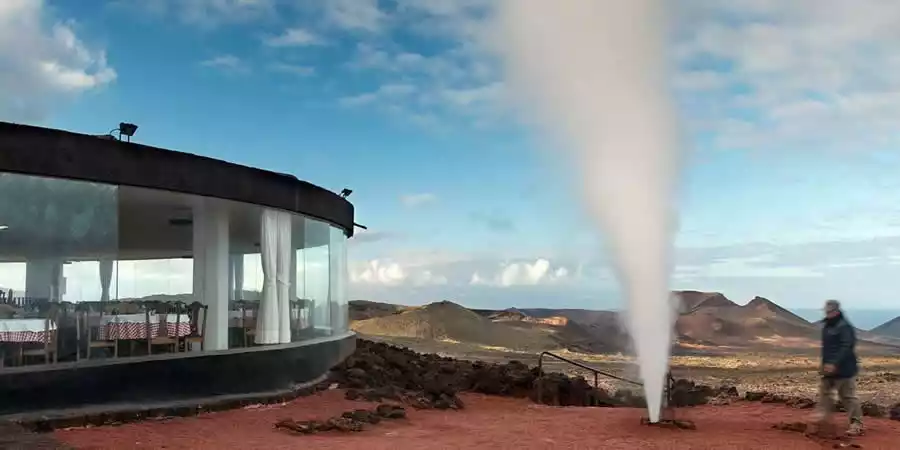
They are in the heart of the Timanfaya National Park, one of the 12 existing in Spain. It comprises a spectacular sea of lava dotted with dozens of volcanic cones, arising from the volcanic eruptions that occurred between 1730 and 1736 and 1824.
It extends through the southwest of Lanzarote, between the municipalities of Yaiza and Tinajo. In the place called Islote de Hilario, fire and water manifestations take place that shows the enormous heat energy contained in the subsoil.
The Island Government - Cabildo de Lanzarote- conditioned the Islote de Hilario by creating a restaurant and cafeteria with a circular floor plan, called El Diablo, which offers a panoramic view of the unique lava territory that surrounds it. It contains a large oven that takes advantage of natural heat energy to cook meat and fish, and that reaches 400°C –725º F- almost at ground level.
Guaguas -buses- depart regularly from these facilities to carry out the Route of the Volcanoes, which consists of a collective visit to the interior of the National Park. Along its route, which lasts three-quarters of an hour on a 13 km journey, the characteristics of the natural phenomenon are explained and described.
The Montañas del Fuego is accessed by the road that joins the towns of Yaiza and Tinajo. The visitor enters the Islote de Hilario through a colorful and unprecedented landscape, a place where heat manifestations can be observed. Vegetable matter burns immediately when it comes into contact with heat, and the same happens with water poured into tubes installed in the ground, evaporating instantly, and being thrown into the atmosphere as if it were a small geyser.
The Route of the Volcanoes meanders between small cones and exclusive landscapes, offering the viewer overwhelming images, whimsical forms, and intimate sensations that put them in contact with the origin of the formation of the planet.
Although they were visited due to their interest, the Montañas del Fuego opened to the public under the management of the Insular Government in 1970 while the declaration of Timanfaya National Park dates from 1974. The National Park occupies an approximate area of 52 km2, being one of the most important territories in the world for students of volcanism.